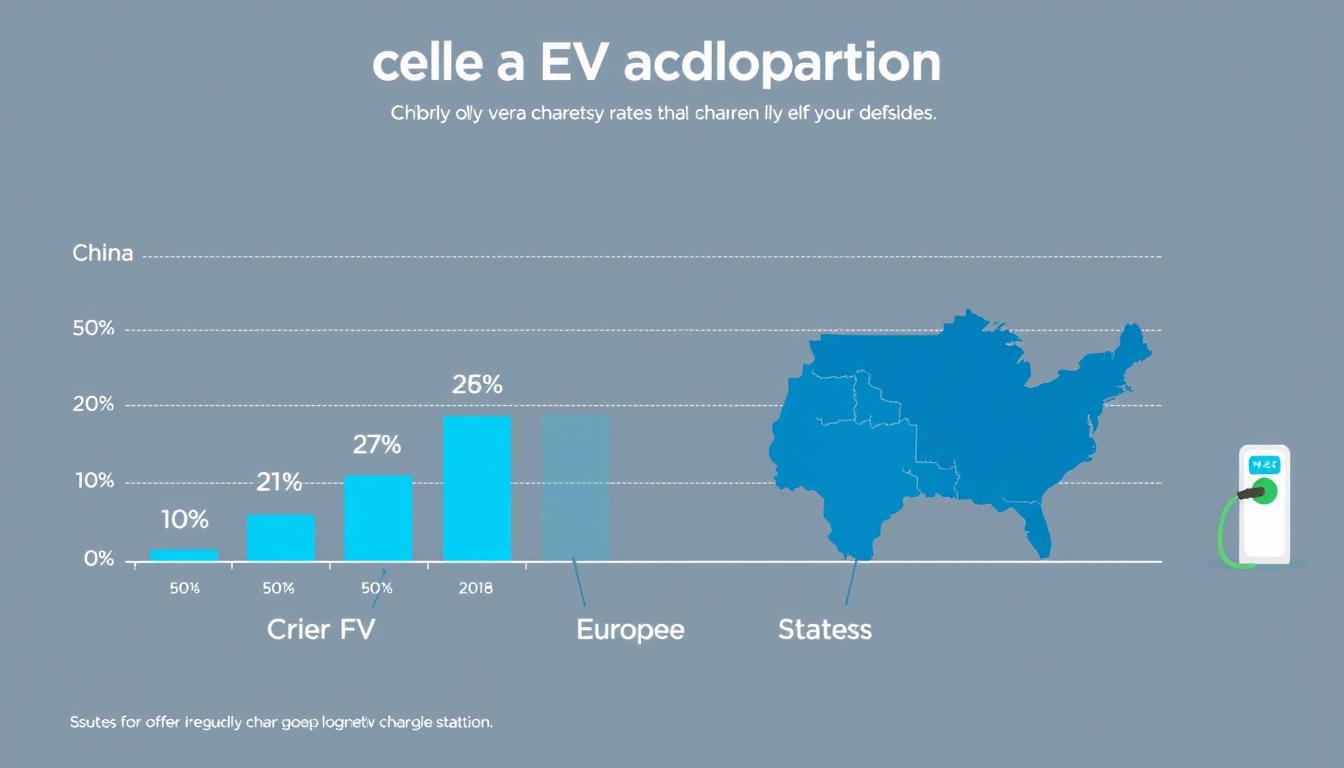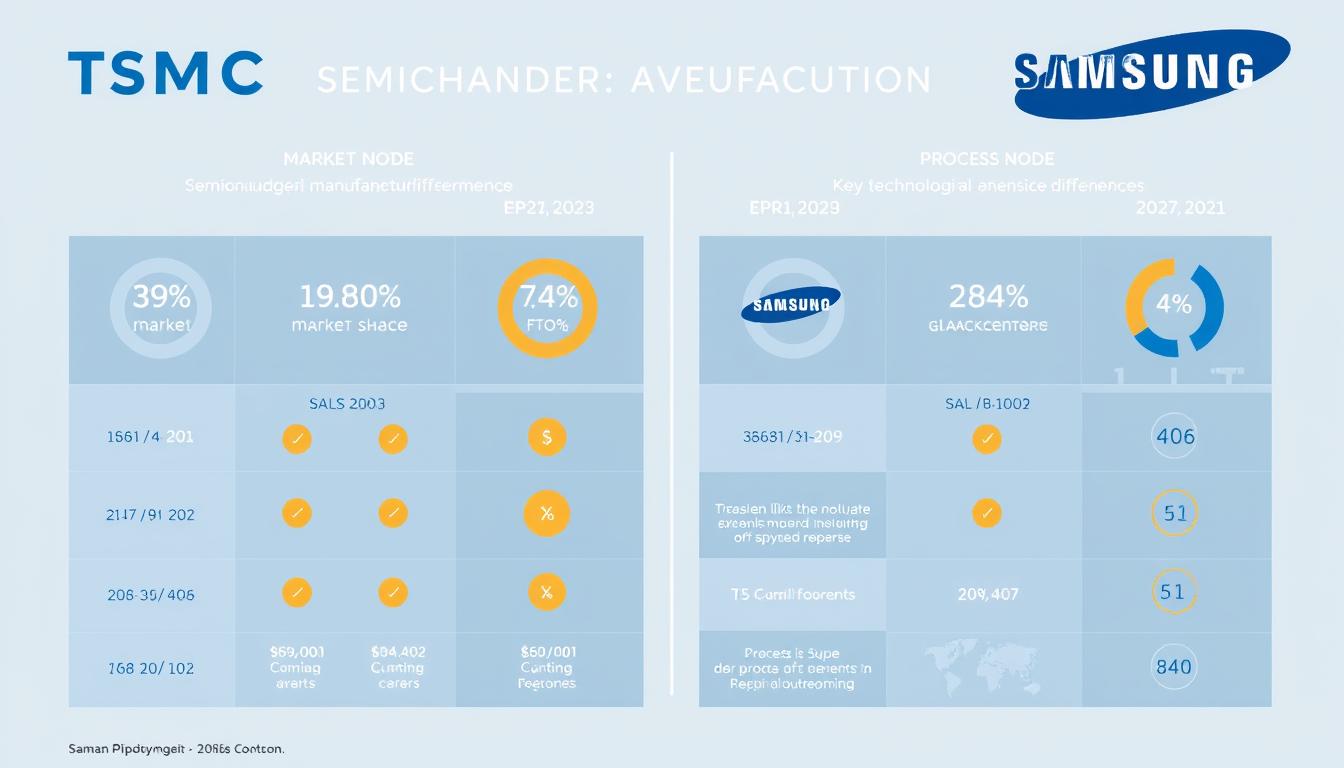In the vast skies of global aviation, two giants have dominated the commercial aircraft manufacturing landscape for decades: Airbus and Boeing. This duopoly has shaped how the world flies, influencing everything from airline economics to passenger experience. The rivalry between the European consortium and the American aerospace veteran represents one of the most fascinating industrial competitions in modern history.
This comprehensive analysis examines how Airbus and Boeing compare across multiple dimensions: their corporate histories, technological innovations, market positions, financial performance, and future challenges. By exploring these facets objectively, we can better understand the complex dynamics that drive the global aerospace industry and assess which manufacturer truly flies higher in today’s competitive landscape.
1. Company Overview
Airbus headquarters in Toulouse, France (left) and Boeing headquarters in Chicago, USA (right)
Founding and Early Years
Boeing’s story begins in 1916 when William E. Boeing founded the Pacific Aero Products Company in Seattle, Washington. Renamed Boeing Airplane Company a year later, it initially built seaplanes for the U.S. Navy during World War I. Throughout the early 20th century, Boeing established itself as a pioneer in American aviation, producing both military and civilian aircraft.
Airbus emerged much later as a European response to American dominance in commercial aviation. Formally established in 1970 as a consortium between French, German, Spanish, and later British aerospace companies, Airbus represented a strategic European initiative to compete in the global aircraft market. The company’s first aircraft, the A300, took flight in 1972 as the world’s first twin-engine widebody commercial aircraft.
Corporate Evolution
Boeing’s growth trajectory included significant mergers and acquisitions. The 1997 merger with McDonnell Douglas particularly strengthened Boeing’s position, combining two aerospace giants. In 2001, Boeing relocated its headquarters from Seattle to Chicago (and more recently to Arlington, Virginia in 2022), signaling its evolution into a diversified aerospace corporation beyond just aircraft manufacturing.
Airbus transformed from a consortium into a single integrated company in 2001 with the formation of Airbus SAS. This restructuring streamlined decision-making and operations, allowing Airbus to compete more effectively against Boeing. Today, Airbus SE (Societas Europaea) operates as a pan-European corporation with its main headquarters in Toulouse, France.
Key Milestones
Boeing Milestones
- 1916: Company founded by William Boeing
- 1958: Boeing 707 introduced, revolutionizing jet travel
- 1969: Boeing 747 “Jumbo Jet” makes its first flight
- 1997: Merger with McDonnell Douglas
- 2011: Boeing 787 Dreamliner enters service
- 2019-2020: 737 MAX crisis and grounding
- 2022: Headquarters relocated to Arlington, Virginia
Airbus Milestones
- 1970: Airbus Industrie formed as a European consortium
- 1974: First Airbus aircraft (A300) enters service
- 1988: A320 introduced with fly-by-wire technology
- 2001: Reorganization as an integrated company
- 2005: A380 superjumbo makes its first flight
- 2016: A350 XWB enters service
- 2019: Becomes world’s largest aerospace company by revenue
2. Core Focus and Divisions
Commercial aircraft lineup from both manufacturers showcasing their diverse product ranges
Commercial Aviation
Commercial aircraft manufacturing forms the backbone of both companies. Boeing Commercial Airplanes, headquartered in Renton, Washington, produces the 737, 767, 777, and 787 families. The 737 series, particularly the Next Generation (NG) and MAX variants, competes directly with Airbus’s A320 family in the narrow-body segment, which represents the largest portion of the commercial aircraft market.
Airbus Commercial Aircraft, based in Toulouse, France, produces the A220 (formerly Bombardier CSeries), A320, A330, A350, and until recently, the A380 families. The A320neo (new engine option) family has been particularly successful, securing more orders than Boeing’s 737 MAX in recent years. Airbus’s strategy of offering commonality across its product line has appealed to airlines seeking operational flexibility and reduced training costs.
Defense and Space
Boeing Defense, Space & Security (BDS) represents a significant portion of Boeing’s business, producing military aircraft, network systems, and space systems. Key products include the F/A-18 Super Hornet, KC-46 tanker, and various missile defense systems. Boeing’s space division contributes to NASA’s Space Launch System and produces the CST-100 Starliner spacecraft.
Airbus Defence and Space emerged from the reorganization of EADS (European Aeronautic Defence and Space Company) in 2014. This division produces military transport aircraft like the A400M, fighter jets through the Eurofighter consortium, and various space systems including satellites and the Ariane launch vehicle. While historically smaller than Boeing’s defense business, which includes models like the Boeing 787 and Boeing 737 MAX, Airbus has steadily expanded its military portfolio. In the competitive aviation industry, Airbus’s aircraft, including the A320 neo family and the Airbus A350, continue to challenge Boeing’s offerings such as the Boeing 747 and the wide-body aircraft segment, further establishing Airbus as a key player alongside Boeing.
Services and Support
Boeing Global Services, established as a separate business unit in 2017, provides aftermarket support, including maintenance, modifications, training, and digital solutions. This division has become increasingly important to Boeing’s business model, offering more stable revenue streams compared to the cyclical aircraft sales business.
Airbus Services similarly focuses on aftermarket support, providing maintenance, training, upgrades, and digital solutions to operators of Airbus aircraft. Both manufacturers have recognized the strategic importance of services, not only for revenue diversification but also for maintaining long-term relationships with customers throughout the lifecycle of their aircraft.
| Business Segment | Boeing | Airbus |
| Commercial Aircraft | 737, 767, 777, 787 families | A220, A320, A330, A350 families |
| Military Aircraft | F/A-18, F-15, P-8, KC-46 | A400M, Eurofighter Typhoon, A330 MRTT |
| Space Systems | Satellites, SLS, Starliner | Satellites, Ariane launcher, ISS modules |
| Helicopters | AH-64 Apache, CH-47 Chinook | H125, H160, H225 (through Airbus Helicopters) |
| Services | Boeing Global Services | Airbus Services |
3. Technological Innovation

Boeing 787 Dreamliner (left) and Airbus A350 XWB (right) represent the pinnacle of modern aircraft design
Composite Materials
Both manufacturers have embraced composite materials to reduce weight and improve fuel efficiency. Boeing’s 787 Dreamliner pioneered the extensive use of composites in commercial aircraft, with approximately 50% of its structure made from carbon fiber-reinforced polymers. This innovation allowed for significant weight savings, better fuel efficiency, and improved passenger comfort through features like higher cabin humidity and larger windows.
Airbus responded with the A350 XWB (Extra Wide Body), which features 53% composite materials by weight. The A350’s composite fuselage is constructed in larger sections than the 787’s, potentially simplifying assembly. Both aircraft demonstrate how composite technology has transformed aircraft design, enabling more efficient and comfortable long-haul travel.
Flight Control Systems
Airbus revolutionized commercial aviation with the introduction of fly-by-wire technology in the A320 in the late 1980s. This system replaces conventional manual controls with electronic interfaces, where pilot inputs are interpreted by computers that determine the optimal control surface movements. Airbus’s approach includes built-in protections that prevent the aircraft from exceeding certain parameters, reflecting a philosophy that prioritizes automation.
Boeing initially took a more conservative approach to fly-by-wire, maintaining more direct pilot control and tactile feedback. The 777 was Boeing’s first commercial aircraft to feature a full fly-by-wire system, though it retained conventional control yokes rather than the sidesticks used by Airbus. This philosophical difference in flight control design reflects broader approaches to the pilot-aircraft interface.
Engine Technology
Engine efficiency has become a critical competitive factor. Both manufacturers have embraced new engine technologies, with the A320neo and 737 MAX featuring next-generation engines that offer significant fuel savings compared to their predecessors. The LEAP engines (produced by CFM International) and the Pratt & Whitney PW1000G (Geared Turbofan) represent major advances in propulsion technology.
For widebody aircraft, both the 787 and A350 utilize advanced high-bypass turbofan engines from Rolls-Royce and General Electric. These engines incorporate sophisticated materials like ceramic matrix composites and advanced aerodynamics to improve efficiency and reduce emissions, much like the innovations seen in the narrow-body aircraft such as the Airbus A320 and Boeing 737. The advancements in the 777 and 787 families highlight the competitive edge between Boeing and Airbus, showcasing how both manufacturers are leading the way in the development of modern aircraft.
Digital Manufacturing
Both companies have transformed their manufacturing processes through digitalization. Boeing’s 777X production incorporates automated fiber placement for composite components and digital design tools that enhance precision. Similarly, Airbus has implemented “smart factory” concepts across its production network, using digital twins, augmented reality, and automated assembly systems.
These digital manufacturing approaches have improved quality control, reduced production time, and enhanced flexibility. However, the complexity of these systems has also presented challenges, as evidenced by Boeing’s production issues with the 787 and Airbus’s early A380 wiring problems.
Boeing’s Technological Strengths
- Pioneer in composite airframe technology with 787
- More traditional control systems preferred by some pilots
- Advanced aerodynamics with raked wingtips
- Innovative cabin features like dynamic LED lighting
Airbus’s Technological Strengths
- Leader in fly-by-wire implementation
- Higher percentage of composites in A350 XWB
- Common cockpit design across aircraft families
- Innovative winglet designs (sharklets)
5. Strengths and Weaknesses
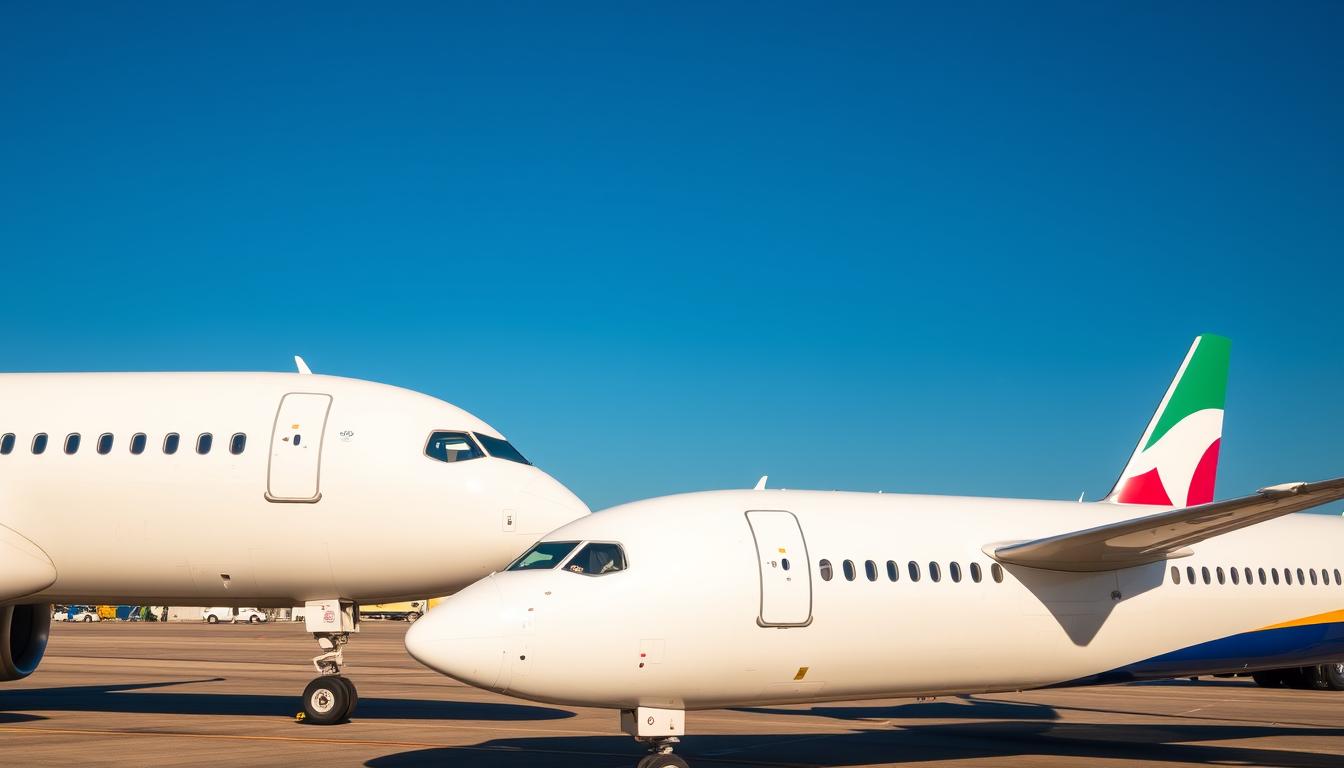
Airbus A320neo (left) and Boeing 737 MAX (right) represent the fierce competition in the narrow-body market
Design Philosophy
Airbus and Boeing exhibit distinct design philosophies that influence their aircraft development. Airbus emphasizes commonality across its product line, with similar cockpit layouts and handling characteristics across different aircraft models. This approach reduces training costs for airlines and provides flexibility in pilot assignments. Airbus also tends to incorporate more automation in its flight control systems, reflecting a philosophy that technology can enhance safety by preventing pilot errors.
Boeing has traditionally focused on providing pilots with more direct control and feedback. While Boeing has increased commonality in recent designs, its aircraft still maintain more distinct characteristics across models. Boeing’s philosophy has historically emphasized the pilot’s role as the ultimate decision-maker, though this approach has evolved with newer aircraft incorporating more automated systems.
Manufacturing Approach
Boeing’s manufacturing was historically concentrated in the Seattle area, though it has expanded to sites in South Carolina and elsewhere. This centralized approach provided advantages in oversight and integration but has sometimes created vulnerabilities to local labor issues or supply chain disruptions. Boeing’s attempt to outsource significant portions of 787 production led to integration challenges that delayed the program.
Airbus adopted a distributed manufacturing model from its inception, with major components produced across European partner countries before final assembly in Toulouse, Hamburg, Mobile (Alabama), and Tianjin (China). While logistically complex, this approach has political advantages in maintaining support from European governments and has helped Airbus gain market access in countries like China and the United States.
Regulatory Environment
Both manufacturers operate under intense regulatory scrutiny, primarily from the U.S. Federal Aviation Administration (FAA) and the European Union Aviation Safety Agency (EASA). Historically, Boeing benefited from its close relationship with the FAA, which allowed for more manufacturer involvement in the certification process through programs like Organization Designation Authorization (ODA).
The 737 MAX crisis prompted significant reevaluation of this approach, with increased FAA oversight and international coordination in certification. Airbus, operating primarily under EASA oversight, has faced a different regulatory environment that has traditionally involved more direct agency involvement in certification processes.
Crisis Management
Boeing’s handling of the 737 MAX crisis revealed significant weaknesses in its safety culture and crisis management capabilities. The company faced criticism for its initial response, communication with airlines and regulators, and the time required to implement fixes. These issues damaged Boeing’s reputation for safety and reliability, which had been core strengths throughout its history.
Airbus has faced its own challenges, including A380 production issues and A320neo engine problems, but has generally managed these situations without the same level of reputational damage. Both companies continue to face scrutiny over how they balance commercial pressures with safety considerations.
6. Financial Performance
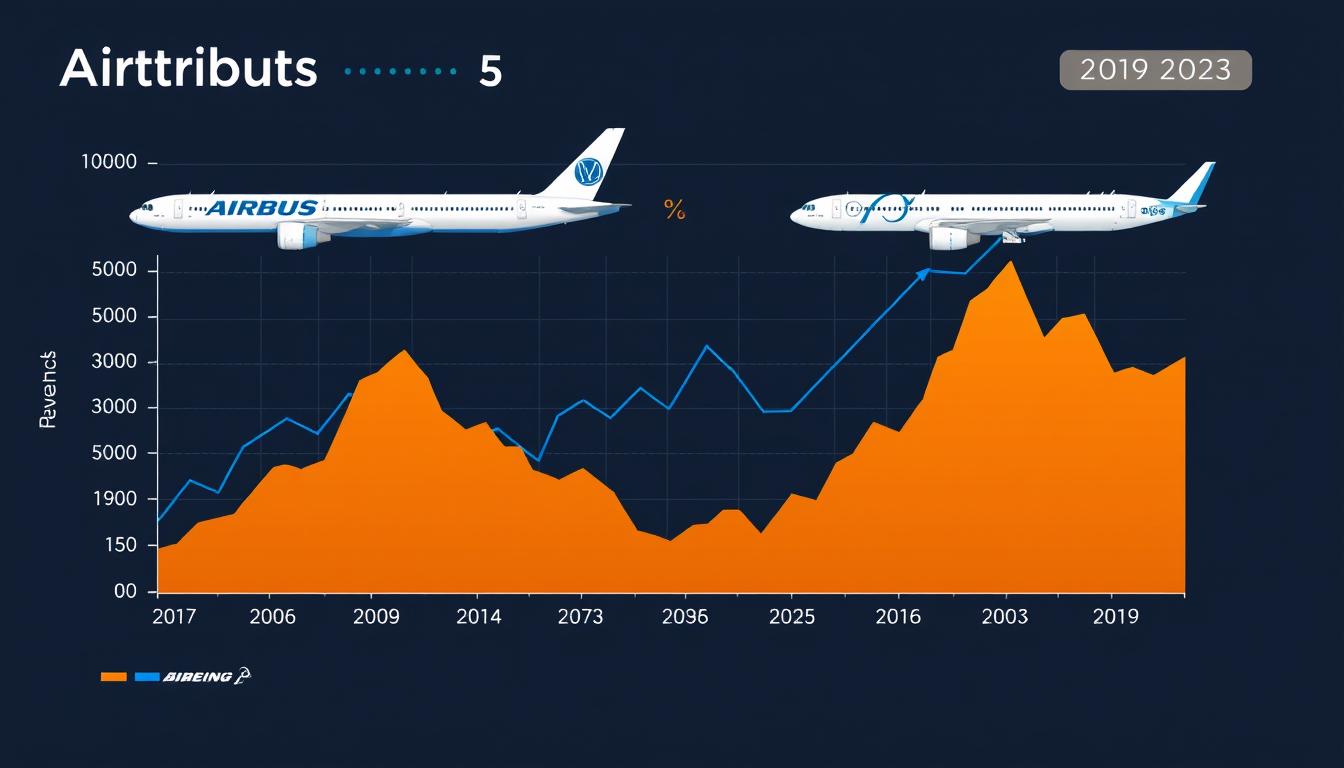
Financial performance comparison between Airbus and Boeing (2019-2023)
Revenue and Profitability
The financial trajectories of Airbus and Boeing have diverged significantly in recent years. Prior to 2019, both companies enjoyed strong financial performance, with Boeing typically generating higher revenues and profits due to its larger defense business and higher-margin widebody deliveries. However, the 737 MAX crisis fundamentally altered this dynamic.
Boeing reported significant losses in 2019 and 2020, with the situation further exacerbated by the COVID-19 pandemic’s impact on commercial aviation. In 2020, Boeing reported a net loss of $11.9 billion, its largest ever. Recovery has been slow, with continued losses in 2021 and 2022 before returning to profitability in 2023. Boeing’s revenue in 2023 was $77.8 billion, still below pre-crisis levels.
Airbus also faced challenges from the pandemic but maintained relative financial stability. After a loss in 2020, Airbus returned to profitability in 2021 and has continued to strengthen its financial position. In 2023, Airbus reported revenue of €65.4 billion ($70.8 billion) and a net income of €3.8 billion ($4.1 billion), reflecting its stronger market position and operational recovery.
R&D Investment
Research and development spending reflects each company’s priorities and financial capacity. Historically, Boeing invested heavily in programs like the 787 and 777X, with R&D expenditures often exceeding $3 billion annually. However, financial pressures have constrained Boeing’s R&D spending in recent years, potentially affecting its long-term competitiveness.
Airbus has maintained more consistent R&D investment, focusing on programs like the A320neo, A350, and now its zero-emission aircraft initiatives. Airbus’s R&D spending has typically ranged between €2-3 billion annually, reflecting its commitment to technological advancement despite market fluctuations.
Debt and Liquidity
Boeing’s financial challenges have significantly impacted its balance sheet. To weather the 737 MAX crisis and pandemic, Boeing substantially increased its debt, which reached approximately $57 billion by the end of 2023. This high debt level constrains Boeing’s flexibility for new aircraft development programs and increases its financial vulnerability.
Airbus entered the pandemic with a stronger balance sheet and has maintained better liquidity throughout the crisis. While Airbus also increased debt during the pandemic, it has been able to reduce its financial leverage more quickly as operations normalized. This stronger financial position provides Airbus with greater flexibility for future investments.
Shareholder Returns
The divergent operational performance has been reflected in shareholder returns. Boeing’s stock price fell dramatically during the 737 MAX crisis and pandemic, and while it has partially recovered, it remains well below its 2019 peak. Boeing suspended its dividend in March 2020 and has not reinstated it as of early 2024, prioritizing debt reduction and financial stability.
Airbus shares have performed comparatively better, recovering more quickly from the pandemic downturn. Airbus resumed dividend payments in 2022 after a pandemic-related suspension, signaling confidence in its financial outlook. This stronger stock performance reflects investor confidence in Airbus’s market position and financial management.
| Financial Metric (2023) | Airbus | Boeing |
| Revenue | €65.4 billion ($70.8 billion) | $77.8 billion |
| Net Income | €3.8 billion ($4.1 billion) | $2.2 billion |
| Free Cash Flow | €4.4 billion ($4.8 billion) | $4.3 billion |
| Total Debt | €11.9 billion ($12.9 billion) | $57.0 billion |
| R&D Expenditure | €2.8 billion ($3.0 billion) | $2.5 billion |
7. Sustainability and Environmental Goals
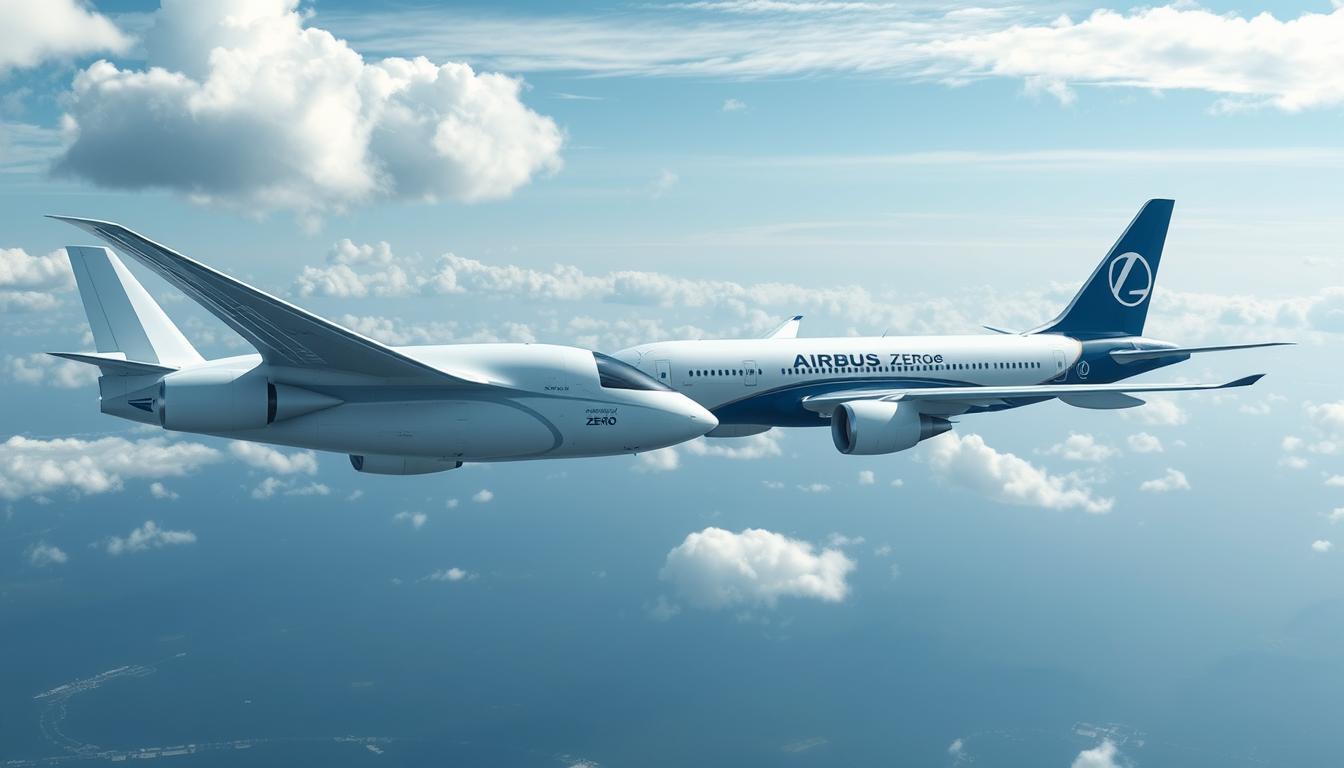
Airbus ZEROe hydrogen concept aircraft (left) and Boeing ecoDemonstrator program (right)
Emission Reduction Targets
Both Airbus and Boeing have committed to ambitious emission reduction targets in response to growing environmental concerns and regulatory pressures. Airbus has pledged to develop the world’s first zero-emission commercial aircraft by 2035 through its ZEROe program, which explores hydrogen propulsion as a primary pathway. The company has also committed to reducing emissions from its industrial operations by 63% by 2030 compared to 2015 levels.
Boeing has taken a more measured approach, focusing on incremental improvements in current aircraft efficiency while researching longer-term solutions. Boeing aims to deliver commercial aircraft capable of flying on 100% sustainable aviation fuel (SAF) by 2030 and has committed to making its operations carbon neutral by the same year. The company’s longer-term goal is to achieve net-zero carbon emissions across its operations and products by 2050.
Sustainable Aviation Fuel
Both manufacturers view sustainable aviation fuel (SAF) as a critical near-term solution for reducing aviation’s carbon footprint. SAF can reduce lifecycle carbon emissions by up to 80% compared to conventional jet fuel, while requiring minimal modifications to existing aircraft and infrastructure. Airbus and Boeing have conducted numerous test flights using SAF and work with fuel producers to accelerate its development and adoption.
Boeing has particularly emphasized SAF as its primary sustainability strategy, partnering with airlines, fuel producers, and research institutions to expand production capacity and reduce costs. Airbus similarly supports SAF development while also pursuing more transformative technologies like hydrogen propulsion for longer-term solutions.
Next-Generation Aircraft
Airbus’s ZEROe program represents the industry’s most ambitious commitment to zero-emission aircraft. The program explores three concept aircraft powered by hydrogen combustion or fuel cells, aiming for entry into service by 2035. This initiative reflects Airbus’s belief that hydrogen represents the most promising pathway to truly zero-emission commercial flight.
Boeing’s approach focuses on its ecoDemonstrator program, which tests new technologies on existing aircraft platforms. Rather than committing to a specific zero-emission timeline, Boeing emphasizes continuous improvement in aircraft efficiency and compatibility with sustainable fuels. The company is also researching electric and hybrid-electric propulsion for smaller aircraft through its joint venture Wisk Aero.
Manufacturing Sustainability
Both manufacturers are working to reduce the environmental impact of their production processes. Airbus has implemented initiatives to reduce energy consumption, water usage, and waste generation across its manufacturing sites. The company has also increased its use of renewable energy, with several facilities now powered by solar or wind energy.
Boeing has similar initiatives under its environmental strategy, focusing on reducing greenhouse gas emissions, water consumption, and waste to landfill. The company has implemented more efficient manufacturing processes and increased its use of renewable energy at key facilities. Both manufacturers recognize that addressing the environmental impact of their operations is essential for credibility in their broader sustainability commitments.
“Climate change is the greatest challenge of our time… The aviation sector must act now and accelerate its transition to sustainable solutions. Airbus believes that hydrogen is one of the most promising technologies to reduce aviation’s climate impact.”
“Sustainable aviation fuels are the safest and most measurable solution to reduce aviation carbon emissions in the coming decades, and Boeing is committed to working with regulators, engine companies and other key stakeholders to ensure their safety and availability.”
8. Brand Reputation and Global Perception
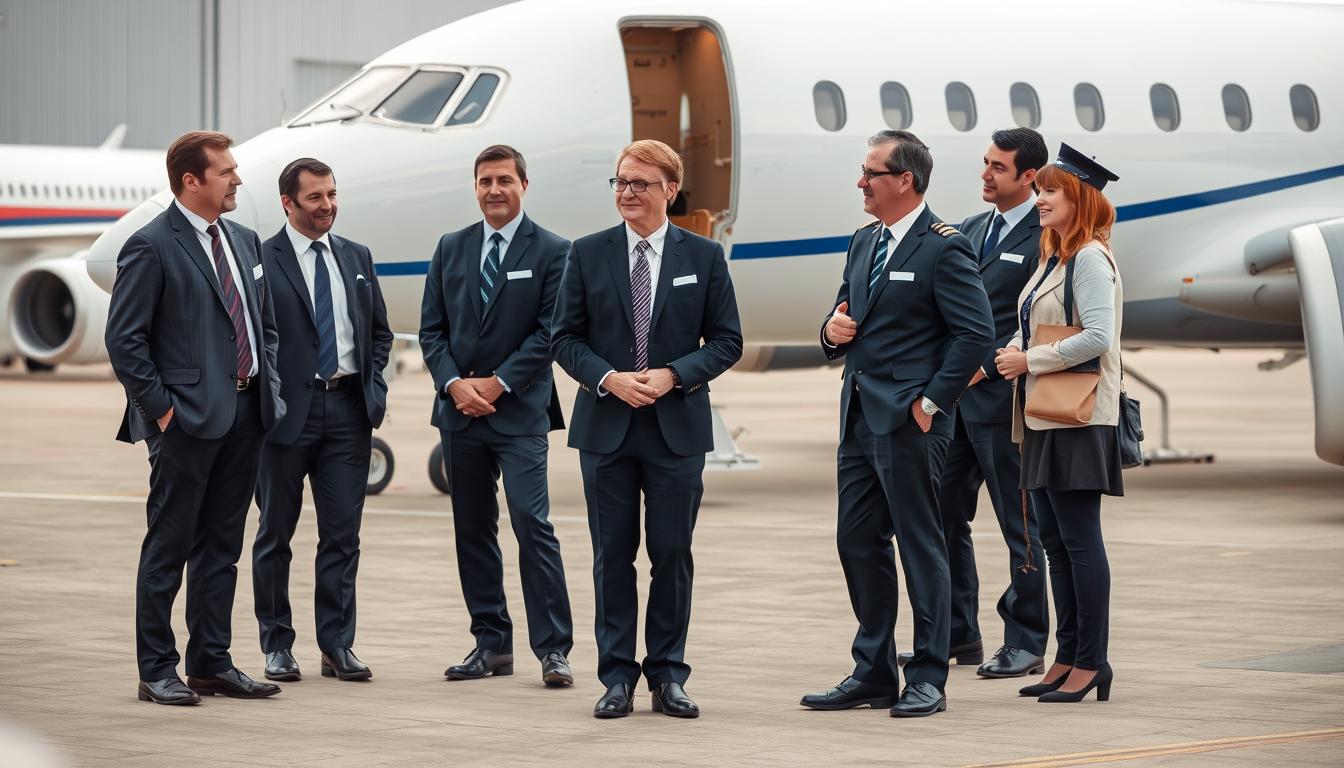
Airline decision-makers evaluating aircraft options from both manufacturers
Safety Records
Safety is paramount in aviation, and both manufacturers have generally maintained strong safety records throughout their histories. However, Boeing’s reputation suffered significantly following the two 737 MAX crashes in 2018 and 2019, which killed 346 people and led to the longest grounding of a modern commercial aircraft. Subsequent investigations revealed design flaws, inadequate training, and shortcomings in the certification process.
Airbus has avoided comparable high-profile safety crises in recent years, though it has experienced incidents and accidents like any manufacturer. The perception of Airbus’s commitment to safety has been reinforced by its consistent emphasis on automated protections in its flight control systems, though this approach has occasionally been criticized for potentially reducing pilot proficiency in manual flying skills.
Airline Perceptions
Airlines evaluate aircraft based on numerous factors including economics, reliability, passenger appeal, and compatibility with existing fleets. Historically, many airlines maintained exclusive relationships with either Boeing or Airbus to simplify maintenance, training, and operations. However, the trend has shifted toward mixed fleets that allow airlines to leverage competition between manufacturers and optimize aircraft selection for specific routes.
Airbus has gained favor with many airlines for its commonality across models, which reduces training costs and provides operational flexibility. Boeing aircraft are often praised for their reliability, range capabilities, and passenger comfort features. Both manufacturers work closely with airline customers to understand their needs and tailor offerings accordingly.
Passenger Preferences
Most passengers are unaware of whether they’re flying on an Airbus or Boeing aircraft, focusing instead on the airline’s service and cabin amenities. However, certain aircraft models have developed reputations among frequent flyers. Boeing’s 787 Dreamliner is known for its larger windows, higher cabin humidity, and lower cabin altitude, which can reduce jet lag on long flights.
Airbus’s A350 offers similar passenger comfort features, with a slightly wider cabin than its Boeing counterpart. In the narrow-body segment, Airbus’s A320 family features slightly wider seats in a typical configuration compared to Boeing’s 737, though airlines ultimately determine the seating layout. These subtle differences can influence passenger experience but rarely drive consumer purchasing decisions.
Media Coverage and Public Perception
Media coverage significantly influences public perception of both manufacturers. Boeing has faced intense scrutiny following the 737 MAX crisis, with extensive reporting on safety concerns, corporate culture issues, and quality control problems. This negative coverage has affected Boeing’s brand image beyond aviation circles, reaching general public awareness.
Airbus has generally received more favorable coverage in recent years, focusing on its market gains, technological innovations, and sustainability initiatives. However, Airbus has faced its own challenges, including investigations into alleged bribery and corruption in aircraft sales that resulted in significant settlements with authorities in 2020.
How do airlines choose between Airbus and Boeing aircraft?▶
Airlines evaluate multiple factors when choosing between Airbus and Boeing, including:
- Purchase price and financing terms
- Operating costs (fuel efficiency, maintenance requirements)
- Compatibility with existing fleet (commonality benefits)
- Performance characteristics (range, payload capacity)
- Delivery availability and production slots
- Passenger comfort features and cabin flexibility
- Residual value projections and lifecycle costs
Many airlines operate mixed fleets to optimize these factors for different routes and market conditions.
Are Airbus or Boeing aircraft safer?▶
Both Airbus and Boeing maintain strong overall safety records, and statistically, commercial aviation remains one of the safest forms of transportation regardless of manufacturer. The two companies take different approaches to safety philosophy, with Airbus emphasizing automated protections and Boeing traditionally focusing on pilot authority.
While Boeing’s reputation was damaged by the 737 MAX crashes, these incidents led to significant reforms in aircraft design, certification processes, and safety culture. Independent aviation safety experts generally agree that aircraft from both manufacturers meet extremely high safety standards when properly designed, certified, maintained, and operated.
9. Current Challenges and Future Outlook

COMAC C919 represents emerging competition from China in the commercial aviation market
Emerging Competition
The Airbus-Boeing duopoly faces increasing challenges from new entrants, particularly China’s Commercial Aircraft Corporation of China (COMAC). COMAC’s C919 narrow-body aircraft entered commercial service in 2023 with China Eastern Airlines, representing China’s ambition to develop a domestic aerospace industry capable of competing globally. While currently limited to the Chinese market, COMAC aims to eventually challenge Airbus and Boeing in international markets.
Russia’s United Aircraft Corporation (UAC) has developed the MC-21 medium-range airliner, though international sanctions following Russia’s invasion of Ukraine have limited its prospects outside Russia. Other potential competitors include Japan’s Mitsubishi SpaceJet program (currently suspended) and Brazil’s Embraer, which is expanding from regional jets into larger aircraft segments.
Supply Chain Challenges
Both manufacturers face significant supply chain challenges that have constrained production rates and delayed deliveries. The COVID-19 pandemic disrupted global aerospace supply chains, leading to shortages of components, raw materials, and skilled labor. These disruptions have been particularly problematic as manufacturers attempt to increase production rates to meet strong post-pandemic demand.
Engine availability has been a specific constraint, with suppliers like CFM International (a joint venture between GE Aerospace and Safran) and Pratt & Whitney struggling to meet production targets. Quality issues have further complicated the situation, with both Airbus and Boeing identifying defects in components that required remediation and slowed deliveries.
Geopolitical Factors
The aerospace industry is highly influenced by geopolitical dynamics, with aircraft sales often tied to diplomatic relationships and trade policies. U.S.-China tensions have affected Boeing’s position in the Chinese market, which historically represented approximately 25% of Boeing’s commercial aircraft deliveries. China has delayed approvals for new Boeing models and directed orders toward Airbus, impacting Boeing’s market share.
Similarly, European-U.S. trade disputes, including longstanding disagreements over government subsidies to both manufacturers, have occasionally resulted in tariffs and trade restrictions. These geopolitical factors add complexity to the competitive landscape and can significantly influence market outcomes beyond pure product considerations.
Future Aircraft Development
Both manufacturers face critical decisions about future aircraft development programs. Boeing must determine whether to launch a new clean-sheet design to replace the 737 MAX and compete with the A320neo family, or continue incremental improvements to its existing product line. This decision is complicated by Boeing’s financial constraints and the need to restore confidence in its development processes.
Airbus faces similar strategic choices, particularly regarding potential replacements for the A320 family and whether to prioritize evolutionary improvements or revolutionary designs incorporating new propulsion technologies. The timing of these decisions is critical, as they will shape the competitive landscape for decades to come.

Concept designs for next-generation sustainable aircraft represent the future direction of commercial aviation
Industry Transformation
The aerospace industry is undergoing fundamental transformation driven by sustainability imperatives, digitalization, and changing travel patterns. Both Airbus and Boeing must navigate these changes while maintaining their core businesses. The push toward zero-emission aircraft represents perhaps the greatest technological challenge the industry has faced since the introduction of jet engines.
Digitalization is transforming aircraft design, manufacturing, and operations. Advanced analytics, artificial intelligence, and digital twins are enabling more efficient development processes and predictive maintenance capabilities. Both manufacturers are investing in these technologies to improve efficiency and create new service offerings.
Key Factors That Will Shape the Future Competition
- Success in developing and implementing sustainable aviation technologies
- Ability to resolve production challenges and meet delivery commitments
- Financial capacity to invest in next-generation aircraft programs
- Adaptation to changing market demands post-pandemic
- Response to new competitors, particularly from China
- Management of geopolitical risks and trade relationships
- Innovation in digital services and aftermarket support
Conclusion: Who Flies Higher?
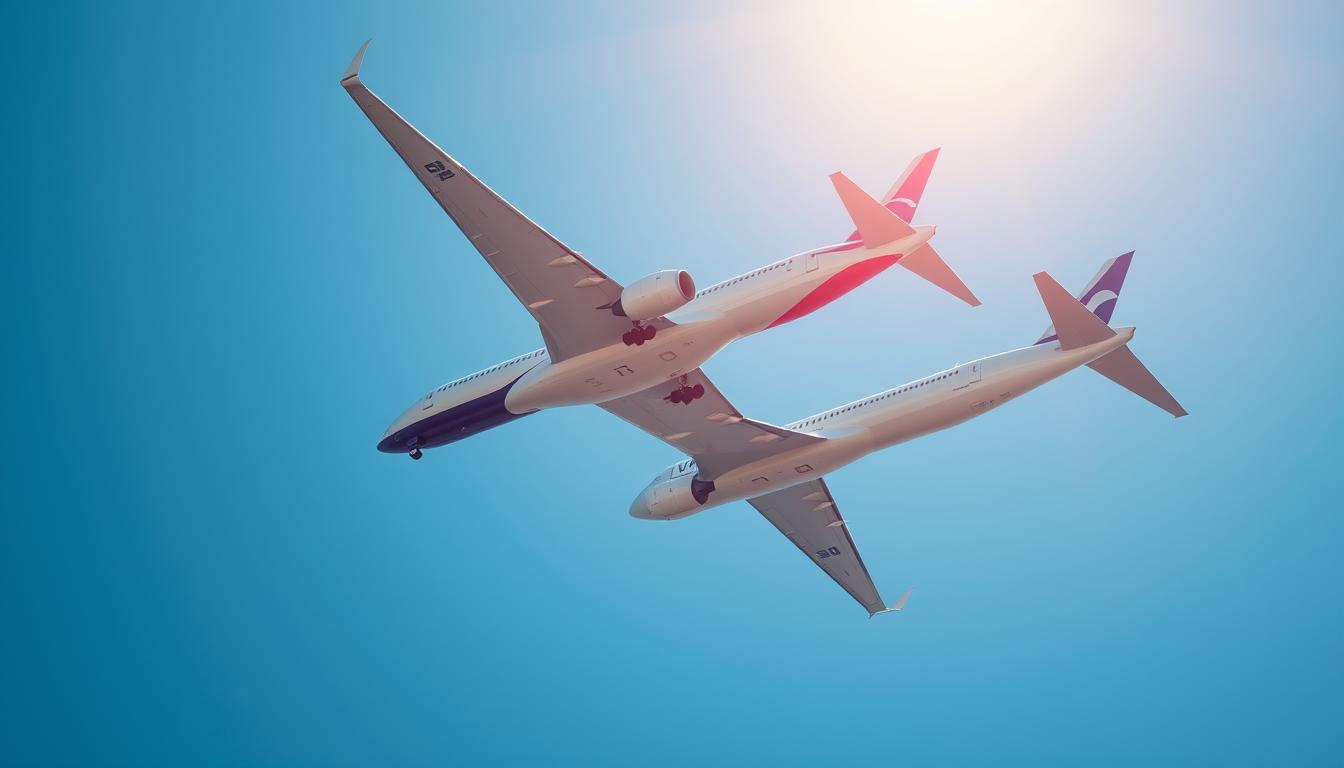
The competition between Airbus and Boeing continues to shape the future of global aviation
The rivalry between Airbus and Boeing represents one of the most fascinating industrial competitions in the global economy. Both manufacturers have demonstrated remarkable resilience, innovation, and adaptability throughout their histories, overcoming numerous challenges to maintain their positions at the forefront of aerospace technology.
Currently, Airbus appears to hold the stronger position in terms of market share, financial stability, and forward momentum. The European manufacturer has capitalized on Boeing’s 737 MAX crisis to gain significant market share in the crucial narrow-body segment and has maintained a more consistent strategic direction. Airbus’s ambitious sustainability initiatives, particularly its commitment to zero-emission aircraft by 2035, position it as a leader in addressing aviation’s environmental challenges.
However, Boeing retains significant strengths, including its extensive defense business, strong position in the widebody market with the 787 and 777X, and deep relationships with key customers. Boeing’s recovery from the 737 MAX crisis demonstrates the company’s resilience and the enduring strength of its engineering capabilities. If Boeing can successfully address its financial and production challenges, it has the potential to regain competitive parity.
The question of which manufacturer “flies higher” ultimately depends on the metrics used for evaluation and the timeframe considered. In the near term, Airbus holds advantages in commercial aircraft deliveries, order backlog, and financial stability. Looking further ahead, both companies face similar transformative challenges related to sustainability, digitalization, and emerging competition.
What is certain is that the competition between these aerospace giants will continue to drive innovation and progress in commercial aviation. Airlines and passengers worldwide benefit from this rivalry through more efficient, comfortable, and sustainable aircraft. As the industry navigates the complex challenges of the coming decades, both Airbus and Boeing will play critical roles in shaping the future of global air transportation.


